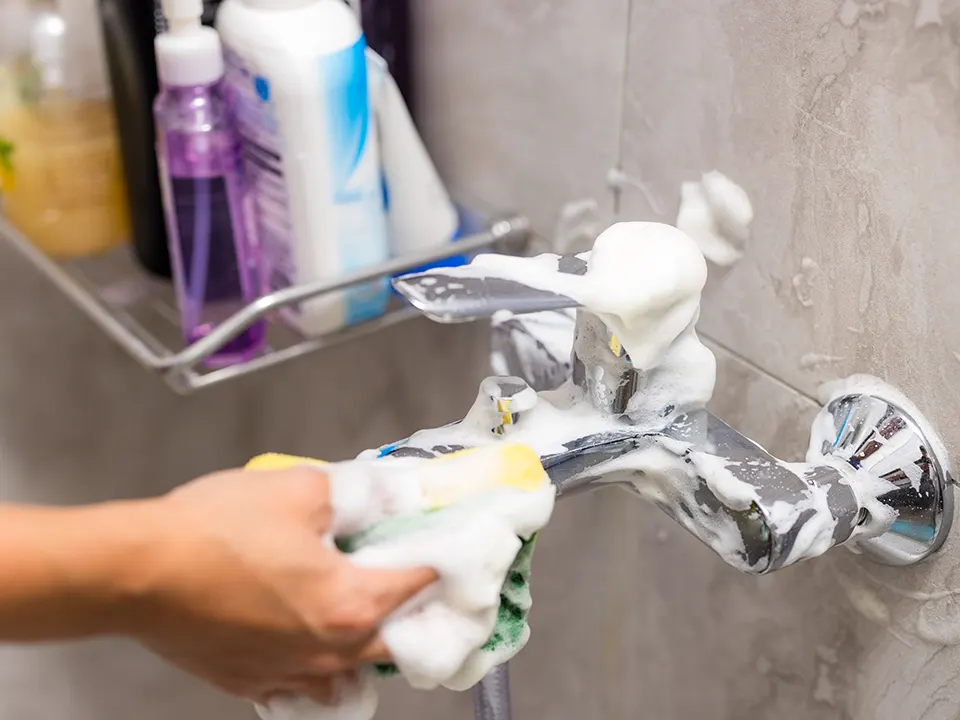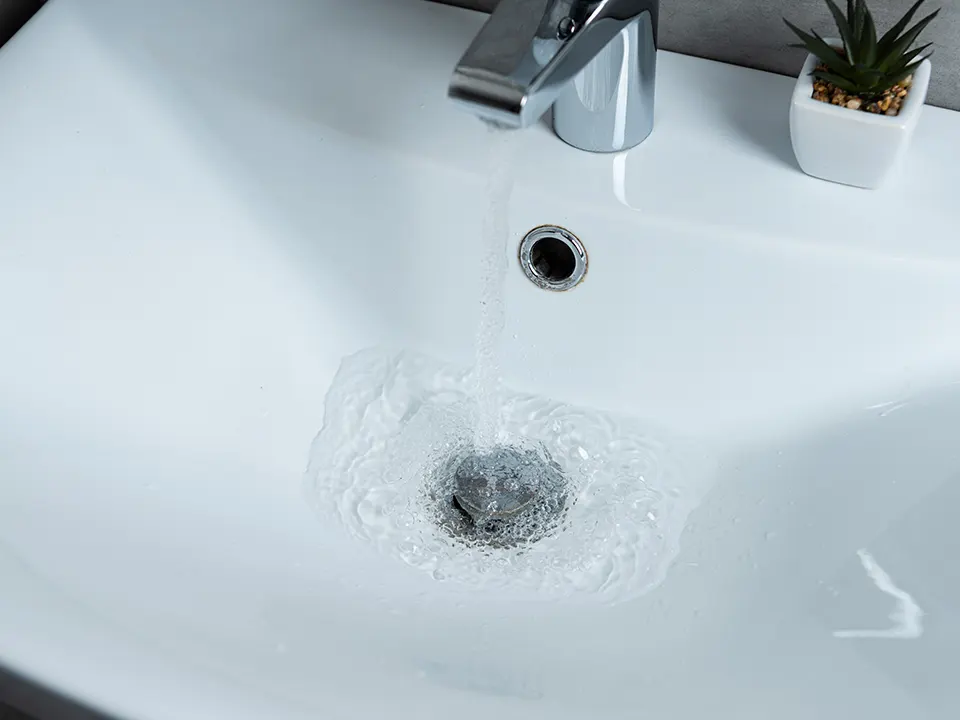
How to Fix Low Water Pressure in Your Home: Simple Solutions
December 13, 2024
How to Replace a Showerhead: A Step-by-Step Guide for Homeowners
January 10, 2025A running toilet isn’t just an annoyance, it’s also a waste of water that can significantly increase your utility bills. Fortunately, most running toilet issues can be fixed with a bit of DIY effort. This guide will walk you through everything you need to know if you're looking to solve your running toilet problem, or looking to prevent it.
How to Fix a Running Toilet
If your toilet won’t stop running, don’t stress. Follow these straightforward steps to fix the issue:
1. Remove the Tank Lid
Lift the lid off the top of your toilet tank and set it aside somewhere safe. This will give you access to the internal components.
2. Check the Fill Tube and Adjust the Float
Look for the thin, flexible tube connecting the fill valve to the overflow tube. This is called the fill tube. Make sure it’s sitting about an inch below the rim of the overflow tube. Also, check the float’s position. Adjust it so the water level in the tank stops about an inch short of the overflow tube when the toilet finishes filling. A misalignment here can often cause the running.
3. Inspect the Handle and Flapper
Next, check the chain that connects the flush handle to the flapper. If the chain is too tight, tangled, or misaligned, the flapper won’t seal correctly, and water will continue to run. Adjust the chain so it has enough slack to let the flapper fully close when you flush. If it’s old or damaged, replace the flapper.
4. Examine the Fill Valve
If adjusting the chain and float doesn’t solve the issue, inspect the fill valve. This is the part responsible for refilling your tank after a flush. Look for any visible signs of wear, rust, or damage. If the fill valve isn’t working properly, replacing it will likely solve the problem.
5. Look at the Overflow Tube
The overflow tube prevents your toilet tank from overfilling with water and spilling into the bowl. Check if it’s misaligned or blocked. If the tube is damaged or not sitting correctly, it can cause water to flow continuously into the toilet. Reposition or replace it if necessary.
6. Replace Faulty or Worn Components
Sometimes the issue might stem from worn-out parts like the flapper, fill valve, or float assembly. Over time, these parts can fail and lead to a constantly running toilet. If you’ve tried the steps above and your toilet is still running, visit your local hardware store, purchase the necessary replacements, and swap out the faulty parts.
7. Test Your Fixes
After adjusting, replacing, or fixing components, flush the toilet and observe whether the problem has been resolved. If the issue persists, retrace the steps to ensure no small adjustments were missed. If you’re still stuck, it might be time to call a professional plumber.

When to Call a Plumber
Sometimes, despite your best efforts, a running toilet can remain a persistent issue. If the following applies to you, it might be time to call a professional plumber:
- You’ve Tried DIY Fixes Without Success: If you’ve followed all the troubleshooting steps and the toilet still won’t stop running, a professional plumber can diagnose and fix the problem.
- Water Pressure Issues: If your running toilet is accompanied by inconsistent water pressure, a plumber can identify whether there is a larger issue with your plumbing system.
- Broken or Advanced Damage: Some internal components may be so worn or damaged that replacing them is outside the scope of DIY repairs.
- You Don’t Have the Tools or Experience: If you’re unfamiliar with DIY plumbing or lack the necessary tools, a plumber can save you time and frustration by handling the issue quickly.
- You Notice Leaks: If water is leaking from your toilet tank, call a plumber immediately. Leaks can lead to water damage and mould problems if left unresolved.
Hiring a professional plumber can save you time and ensure the problem is resolved the right way the first time.
Prevention Tips to Avoid a Running Toilet
Once you’ve tackled the running toilet issue, it’s a good idea to put some simple prevention strategies in place. These tips can help you avoid future problems:
- Inspect Regularly: Periodically check your toilet for wear and tear, especially the flapper, chain, and float components.
- Clean Your Toilet Regularly: Hard water can lead to mineral buildup in your toilet’s internal parts, affecting performance. Clean these areas with a mild soap or water treatment to avoid clogs or malfunctions.
- Replace Old Parts: Flappers and floats have limited life spans. Replace them when they show signs of wear to prevent breakdowns.
- Flush Gently: Avoid pulling the flush handle too hard or forcing it, as excessive strain can lead to component damage.
- Monitor Water Levels: Ensure that your float is adjusted properly to allow the water to stop at the right level.
By following these simple steps, you can keep your toilet functioning smoothly and avoid future plumbing headaches.
summary
A running toilet can quickly become costly and wasteful if not addressed. Fortunately, most issues can be resolved with a few quick DIY steps. Following the fix-it guide and incorporating these simple prevention tips will give you an efficient and trouble-free toilet. With this knowledge, you’ve got everything you need to take care of a running toilet.
A running toilet isn’t just an annoyance, it’s also a waste of water that can significantly increase your utility bills. Fortunately, most running toilet issues can be fixed with a bit of DIY effort. This guide will walk you through everything you need to know if you’re looking to solve your running toilet problem, or looking to prevent it.
How to Fix a Running Toilet
If your toilet won’t stop running, don’t stress. Follow these straightforward steps to fix the issue:
1. Remove the Tank Lid
Lift the lid off the top of your toilet tank and set it aside somewhere safe. This will give you access to the internal components.
2. Check the Fill Tube and Adjust the Float
Look for the thin, flexible tube connecting the fill valve to the overflow tube. This is called the fill tube. Make sure it’s sitting about an inch below the rim of the overflow tube. Also, check the float’s position. Adjust it so the water level in the tank stops about an inch short of the overflow tube when the toilet finishes filling. A misalignment here can often cause the running.
3. Inspect the Handle and Flapper
Next, check the chain that connects the flush handle to the flapper. If the chain is too tight, tangled, or misaligned, the flapper won’t seal correctly, and water will continue to run. Adjust the chain so it has enough slack to let the flapper fully close when you flush. If it’s old or damaged, replace the flapper.
4. Examine the Fill Valve
If adjusting the chain and float doesn’t solve the issue, inspect the fill valve. This is the part responsible for refilling your tank after a flush. Look for any visible signs of wear, rust, or damage. If the fill valve isn’t working properly, replacing it will likely solve the problem.
5. Look at the Overflow Tube
The overflow tube prevents your toilet tank from overfilling with water and spilling into the bowl. Check if it’s misaligned or blocked. If the tube is damaged or not sitting correctly, it can cause water to flow continuously into the toilet. Reposition or replace it if necessary.
6. Replace Faulty or Worn Components
Sometimes the issue might stem from worn-out parts like the flapper, fill valve, or float assembly. Over time, these parts can fail and lead to a constantly running toilet. If you’ve tried the steps above and your toilet is still running, visit your local hardware store, purchase the necessary replacements, and swap out the faulty parts.
7. Test Your Fixes
After adjusting, replacing, or fixing components, flush the toilet and observe whether the problem has been resolved. If the issue persists, retrace the steps to ensure no small adjustments were missed. If you’re still stuck, it might be time to call a professional plumber.
When to Call a Plumber
Sometimes, despite your best efforts, a running toilet can remain a persistent issue. If the following applies to you, it might be time to call a professional plumber:
- You’ve Tried DIY Fixes Without Success: If you’ve followed all the troubleshooting steps and the toilet still won’t stop running, a professional plumber can diagnose and fix the problem.
- Water Pressure Issues: If your running toilet is accompanied by inconsistent water pressure, a plumber can identify whether there is a larger issue with your plumbing system.
- Broken or Advanced Damage: Some internal components may be so worn or damaged that replacing them is outside the scope of DIY repairs.
- You Don’t Have the Tools or Experience: If you’re unfamiliar with DIY plumbing or lack the necessary tools, a plumber can save you time and frustration by handling the issue quickly.
- You Notice Leaks: If water is leaking from your toilet tank, call a plumber immediately. Leaks can lead to water damage and mould problems if left unresolved.
Hiring a professional plumber can save you time and ensure the problem is resolved the right way the first time.
Prevention Tips to Avoid a Running Toilet
Once you’ve tackled the running toilet issue, it’s a good idea to put some simple prevention strategies in place. These tips can help you avoid future problems:
- Inspect Regularly: Periodically check your toilet for wear and tear, especially the flapper, chain, and float components.
- Clean Your Toilet Regularly: Hard water can lead to mineral buildup in your toilet’s internal parts, affecting performance. Clean these areas with a mild soap or water treatment to avoid clogs or malfunctions.
- Replace Old Parts: Flappers and floats have limited life spans. Replace them when they show signs of wear to prevent breakdowns.
- Flush Gently: Avoid pulling the flush handle too hard or forcing it, as excessive strain can lead to component damage.
- Monitor Water Levels: Ensure that your float is adjusted properly to allow the water to stop at the right level.
By following these simple steps, you can keep your toilet functioning smoothly and avoid future plumbing headaches.
In summary
A running toilet can quickly become costly and wasteful if not addressed. Fortunately, most issues can be resolved with a few quick DIY steps. Following the fix-it guide and incorporating these simple prevention tips will give you an efficient and trouble-free toilet. With this knowledge, you’ve got everything you need to take care of a running toilet.
If you’re still struggling with a running toilet or need expert help, contact us. Our plumbing professionals are here to help get your bathroom back on track quickly and efficiently.




